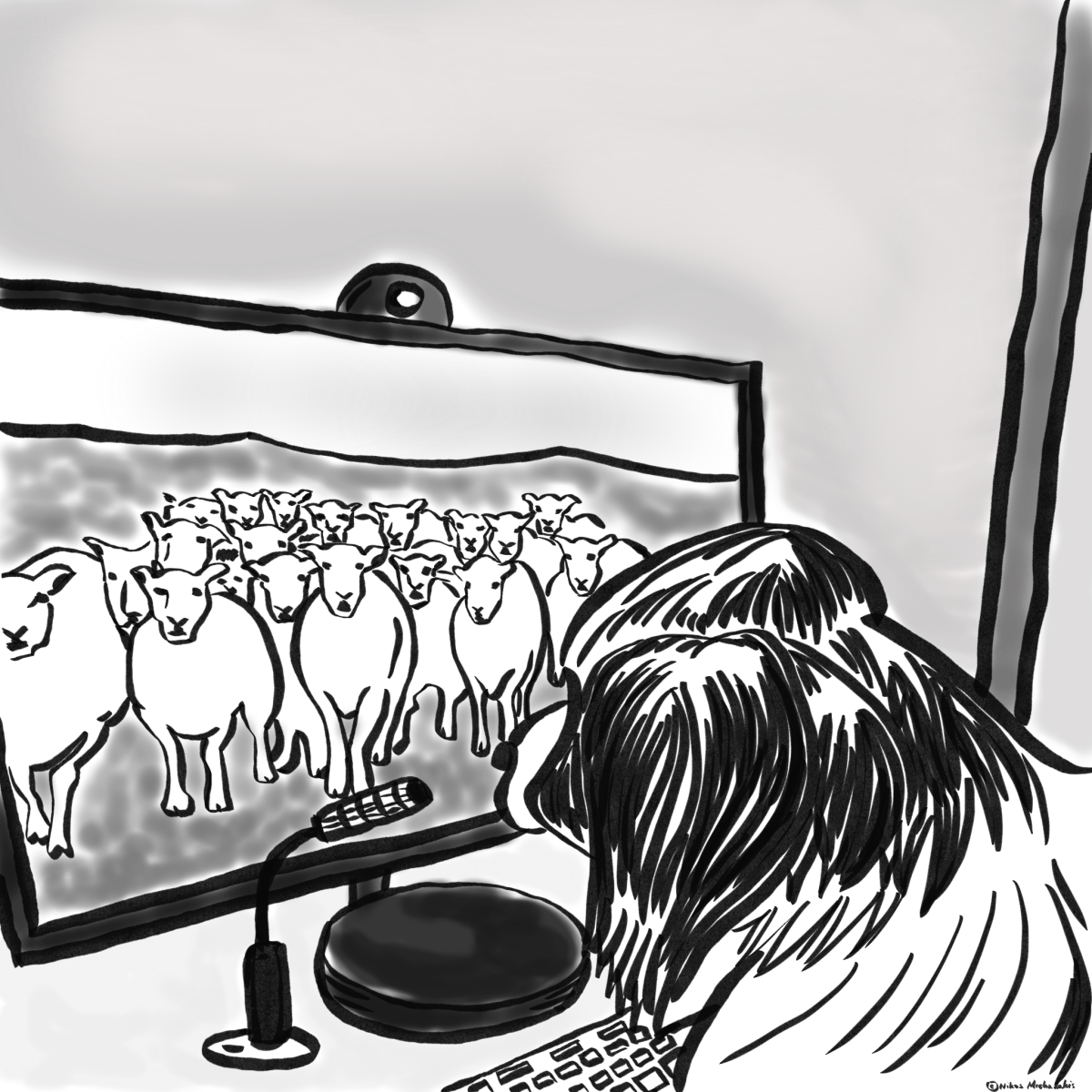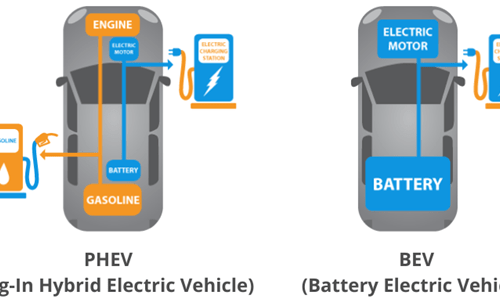
Why can’t everyone telework?

Telework has been broadly adopted globally during the pandemic. It will also become a key component of the post-pandemic work environment, providing benefits to both employees and employers. To the employee, it will give flexibility, offer a better work experience, but also comfort related to the new safety norms being established as part of the pandemic. To the employer, it will expedite the digitization and automation of many business processes, lower costs, and enable the reconfiguration of work environments without loss of productivity.
Recently I have been collaborating with Nikos Michalakis, VP, Software Platform at Toyota Research Institute Advanced Development on the future of work post-pandemic. We have been particularly interested in telework and what it will take for many industries, including the automotive industry, to adopt it. The piece below is the first of a series we are developing.
Telework describes the ability to work full-time remotely, including from home, made possible by utilizing a variety of communication channels and various technologies. It is different from telecommuting which describes the ability to work remotely for part of the workweek. Telework will become a key component of the post-pandemic work environment. It will provide the employee with flexibility and better work experience, but also comfort related to the new safety norms being established as part of the pandemic. It will also be of great benefit to employers because it will expedite the digitization and automation of many business processes, lower costs, and enable the reconfiguration of work environments without loss of productivity. The adoption of telework by industries such as high-tech shows that telework can result in happier and more loyal employees. Today the pandemic is forcing companies to cope and experiment with telework. But, as we expect will happen with other behaviors adopted during the pandemic, telework’s accelerating adoption will continue even after the pandemic is over. Consequently, what should be the long-term considerations for companies regarding telework? Our experience with startups and large corporations in a variety of industries, including automotive, transportation, and high-tech, have provided us with a unique vantage point and perspective regarding the long-term role and feasibility of telework. Through this, and other articles in this series, we will use our experience to explain what is possible in telework, introduce a framework that will enable corporations to understand the prerequisites that will need to be addressed before telework can be adopted at scale, and present telework’s risks.
The Importance of Telework During and After the Pandemic
Momentous events make us think deeply about issues that are important to our personal lives. The restrictions and changes to daily routines that are due to the current pandemic are accelerating our thinking about what work will look like in the future. Work plays a big role in defining our identity and lifestyle. The stature of the company we work for, our position in the company, the location of our work, how much we are compensated for our work, and the flexibility of the work environment are all dimensions that can characterize our “dream job.” For many employees, the flexibility of the work environment is a highly-valued dimension, some ranking it even higher than salary and health insurance. Telework is a key component of work flexibility.
There are two reasons for telework’s rising importance. First, the ongoing need for social distancing that is expected to continue for long after the initial COVID-19 vaccines are introduced in the market. Social distancing is causing companies to reconfigure their workspaces. As a result of this reconfiguration, a workspace will be able to accommodate only a fraction of the employees it could before the pandemic started. Rather than being forced to acquire more space, companies will use this opportunity to re-engineer business processes to make it possible that they can be performed via telework. What complicates this business decision is that not all employees welcome it. Even during these early stages of broader telework adoption, corporations are starting to hear of employee concerns and complaints relating to the changing nature of their social interactions because of working from home.
Second, through the increasing digitization and automation of various work processes, more tasks can be done remotely and by employees with a lower education level and expertise. Robotics and AI software, together with the rapidly improving cloud-based collaboration applications and cybersecurity systems are at the core of these telework-enabling technology innovations. The constraints imposed by the pandemic are causing employers and employees to carefully consider what additional processes to digitize, automate, secure, and then make available for telework. High in this category are processes related to health care, including telemedicine.
Traditionally, sectors that don’t require the employee’s physical presence have aggressively adopted telework. These fall into two categories. The first includes knowledge-intensive industries, such as software, and management consulting. The second includes industries with well-understood processes, such as customer support, whose tasks can be codified so that they can be performed by employees who are not experts. In these categories, telework performed better than expected. It didn’t result in productivity losses and many employees appreciated the flexibility it offered.
Enabling Telework: Environment and Productivity Conditions
A process defines how work is done. A task defines what work is done. The task may be performed by a team of workers or without human intervention. A process consists of a set of tasks that must be performed in a particular order. A task receives input and produces an output. It consists of a collection of activities that utilize/access the input and a set of resources to create the output. A process’s performance is evaluated using a variety of metrics. For example, the process for supporting an existing customer of a software company who is reporting a problem with the company’s product involves, among others, tasks such as identifying the customer, recording the customer’s problem, determining if the problem has been solved before and its solution documented. The resource accessed by the first task is the customer database, whereas the resource accessed by the third task is the solutions knowledge base. Some of the metrics used to evaluate the process’s performance include customer satisfaction, cost per resolved problem, time to resolve each new problem, but also the productivity, and engagement of the customer support team.
What are the environment and productivity conditions of tasks that make them good candidates for telework? We summarize them in Table 1.
| Environment Conditions | Productivity Conditions |
| There is no need for physical interaction with people. | Telework should not degrade the task’s performance (including the degradation of teamwork). Ideally, telework should improve the task’s performance. |
| There is no need for physical contact with goods or equipment. | Telework should not require employees performing the task to have higher qualifications than those performing the work on the organization’s premises. |
| There is no need for interaction over media that cannot accommodate security restrictions. | Telework should not be imposing stricter constraints on employees than those imposed on employees performing the task on the organization’s premises. |
As new technologies are being introduced, the tasks of more processes will become eligible for telework. For example, today grocery store cashiers require physical interaction with people. However, technologies such as those used in Amazon Go stores automate the cashier function. The introduction of robots for shelf-stocking, cleaning, and store monitoring will further reduce the need for the employees that today perform these functions in retail stores. When that happens, even store management will become a process that can be accomplished via telework, whereas today it requires the manager’s physical presence at the store. Similarly, advances in sensor technology, combined with AI-based analytics, digital twins, and virtual reality-based collaboration tools will enable teams that design physical devices, e.g., smartphones, to complete their tasks via telework.
Key questions for the series
A lot is already being written about the future of work. In this series, we will use our expertise and data to focus on a few questions we consider important to the future of telework including:
- How can we define a new process, or retrofit an existing process, to maximize the number of tasks that can be performed via telework?
- What technologies will enable greater adoption of telework? Are there emerging success stories?
- What issues will companies in various industries need to address, and what organizational structures should they use before their employees successfully adopt telework?
- How will we be able to recapture the social queues amongst collaborators to maintain high performance among team members even if they are working remotely?
- What education and training do we need to provide employees in these industries to make telework effective?
- How will corporations fund the transition to telework?
Conclusions
Whether motivated by productivity improvements, employee well-being, cost reductions, or other reasons every industry will adopt telework. It’s not going to be a question of if but a question of when. Currently, the pandemic is forcing every industry to adopt some form of telework, not always leading to the best results. Sometimes employee morale suffers. Other times the process performance suffers. However, the data collected from the experimentation that industries are forced to undertake, in combination with telework-centric approaches to the process creation and reengineering and new technologies will make it possible for the broad adoption of telework across industries. In the next article of the series, we will begin to address the first question by introducing the Telework Process Framework.




Leave a Reply